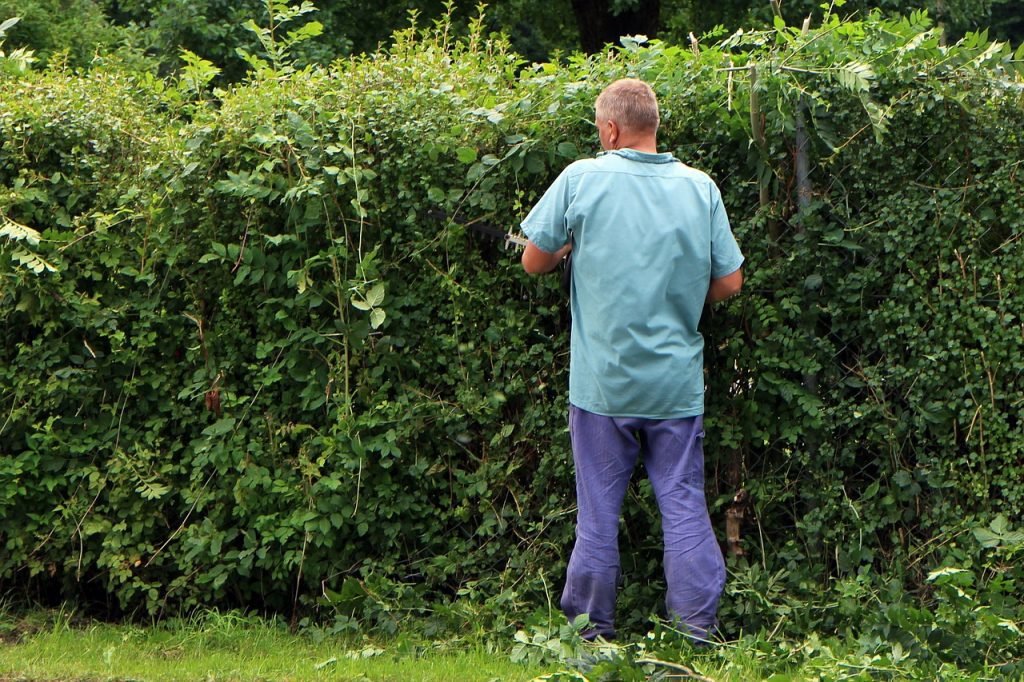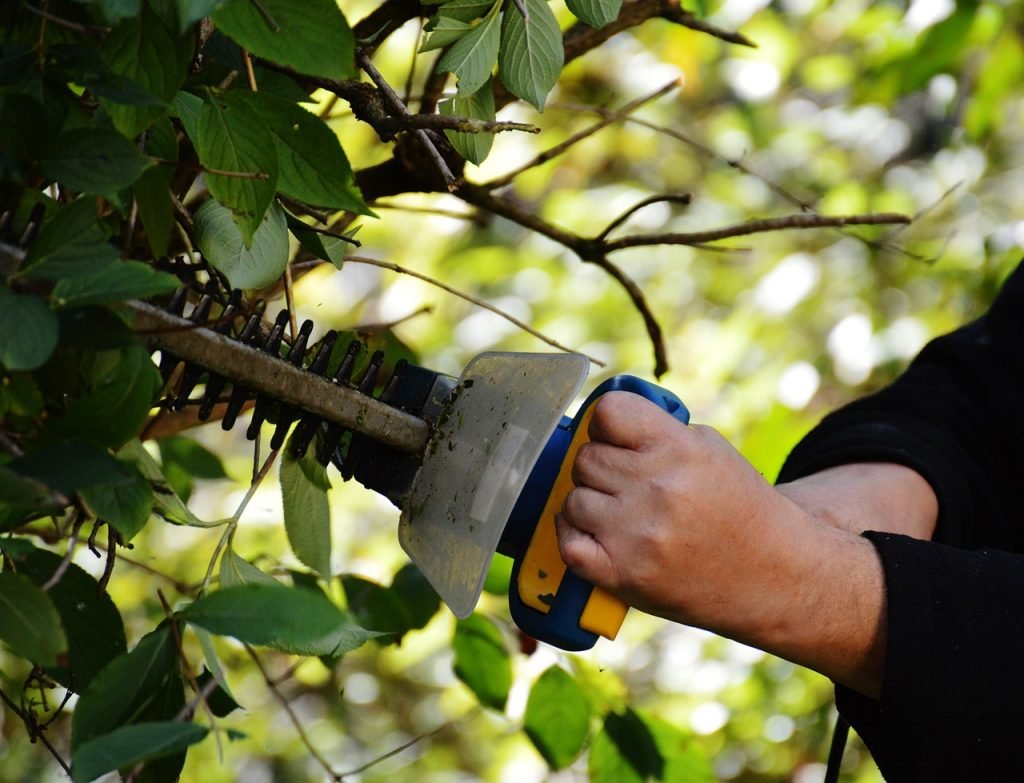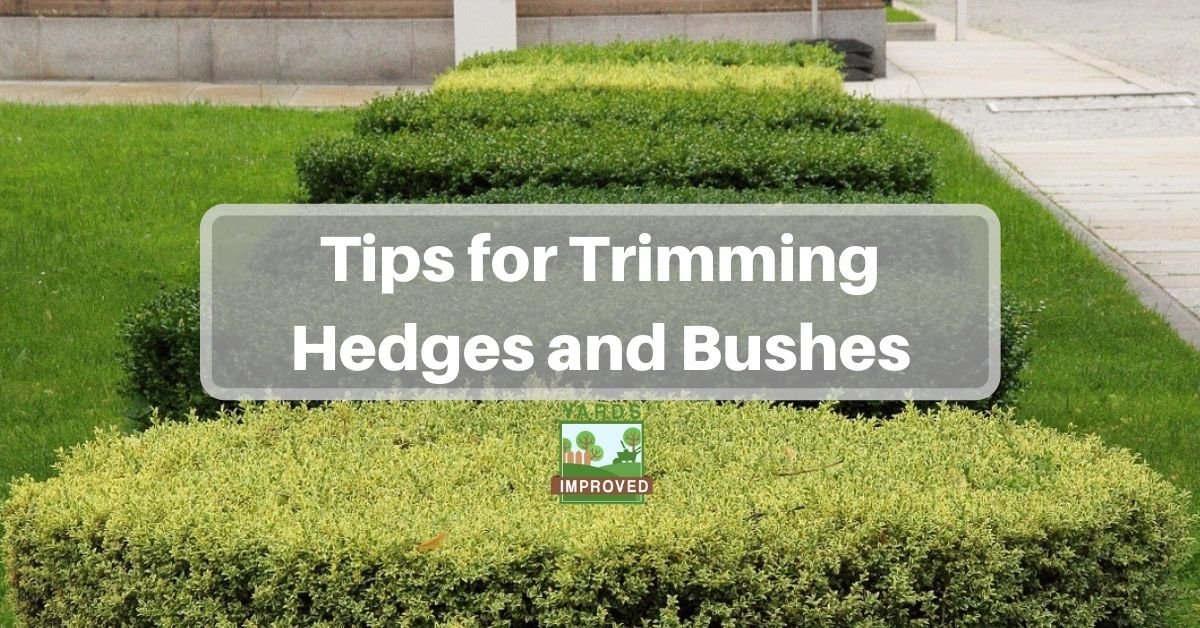Bushes and shrubs can look fantastic around the yard. But they grow quickly and it’s easy for them to become overgrown. That can ruin their appearance, but it also leads to an unhealthier plant. Trimming them takes time and care but it’s a worthwhile task. Your bushes will look better
Still, trimming involves more than just taking a blade to your flora. It calls for care in the time of year as well as the size and shape you’ll trim your bushes. So what do you need to get done, and how do you do it? Read on!
Facing a bigger job? Find advice for tree pruning!
The Tools You’ll Need
Of course, the first thing you need to do is gather your tools. Fortunately, you don’t need many to do this work.
Your primary tool or tools, of course, will do the cutting. You may want one or several tools from among the options
- Electric hedge trimmers, especially if you have a large bush or multiple bushes to trim.
- Alternatively, you could choose gas-powered hedge trimmmers
- Loppers to help you cut larger branches
- Hand pruners
- Pole pruner, if you have a taller bush
- Hedge shears
- Small tree saw
It’s also helpful to place a tarp under the shrub as you work on it. It will catch the trimmings and make them easier to dispose of.
When To Prune
As with most parts of care for plants, there’s a best season to do trimming. And as usual, it depends on the type of bush or shrub.
If you have a flowering plant, trim it back after the first flowers have sprouted. So if it flowers in spring, trim it in late spring or early summer. If it flowers during summer, wait until fall.
If it’s not a flowering shrub, trim after the period of growth.
In either case, always try to allow six weeks after you trim before you expect the first frost.

How To Shape Your Bushes and Hedges
Trimming is more than just shaping your bushes and shrubs. It should help your plants grow more fully and more healthily. To do that, it’s important to keep a few tips in mind.
Get Rid Of Dead Wood
It’s usually easy to spot dead branches. These should be the first to go. Besides looking bad, they also draw energy that could best be used in other parts of the plant.
Remove Waterspouts and Suckers
Check the base of your shrub for new sprouts growing up from the ground. These are known as suckers and should be removed.
Waterspouts are vertical growth growing from existing branches. Trim these, too, as they tend to block nutrients from reaching the outward growth that will make your bush look fuller.
Thin Out The Base
Try to open up the center of your bush. More branches will want to grow out but they end up competing for light and air. Remove some internal branches so it doesn’t get overcrowded. You can remove about one-third of the interior growth.
Trim Back To Buds or Branches
Look for buds that point to the outside of your plant. Leave these, but trim back as far as them. It’s best to get rid of inward-looking buds because the new growth won’t get enough light to thrive.
Check our reviews of the best electric hedge trimmers!
If there aren’t new buds, trim back as far as a side branch. This will help your bush “fill in” rather than simply growing outward.

Cut At The Collar
At the point where a branch grows out from a trunk or another branch, you’ll usually see a “collar” at the joint. Cut just beyond this collar. This will allow it to grow over and “heal.” On the other hand, if you leave material beyond this, it’s likely to rot or become diseased, which could spread to the rest of the plant.
Think Ahead
Over time, branches will grow larger. Even if they remain healthy, they may be too big for the size you want your plant to stay. It’s important to think a year ahead so that you can remove these branches. By next year they may be too big to remove without seriously defacing your shrub!
Keep The Bottom Wider
Your whole plant needs sun, so you need to help it stay out of its own way. As much as possible, keep the bottom a tiny bit wider than the top. That way, the sun can reach the whole plant.
The angle doesn’t have to be sharp – just a slight change will help make sure the light reaches the lower leaves.
Cut Away From Your Walls
Shrubs can grow quickly. They can also scratch your walls. Keep them trimmed about six inches from walls so they don’t do any damage. It will also help them get more light and air.
Conclusion
Trimming your hedges and bushes will keep them healthy and looking great. With just a few basic pointers, you’ll be able to shape them, control their size, and make sure they’ll be a beautiful addition to your lawn for decades to come!









